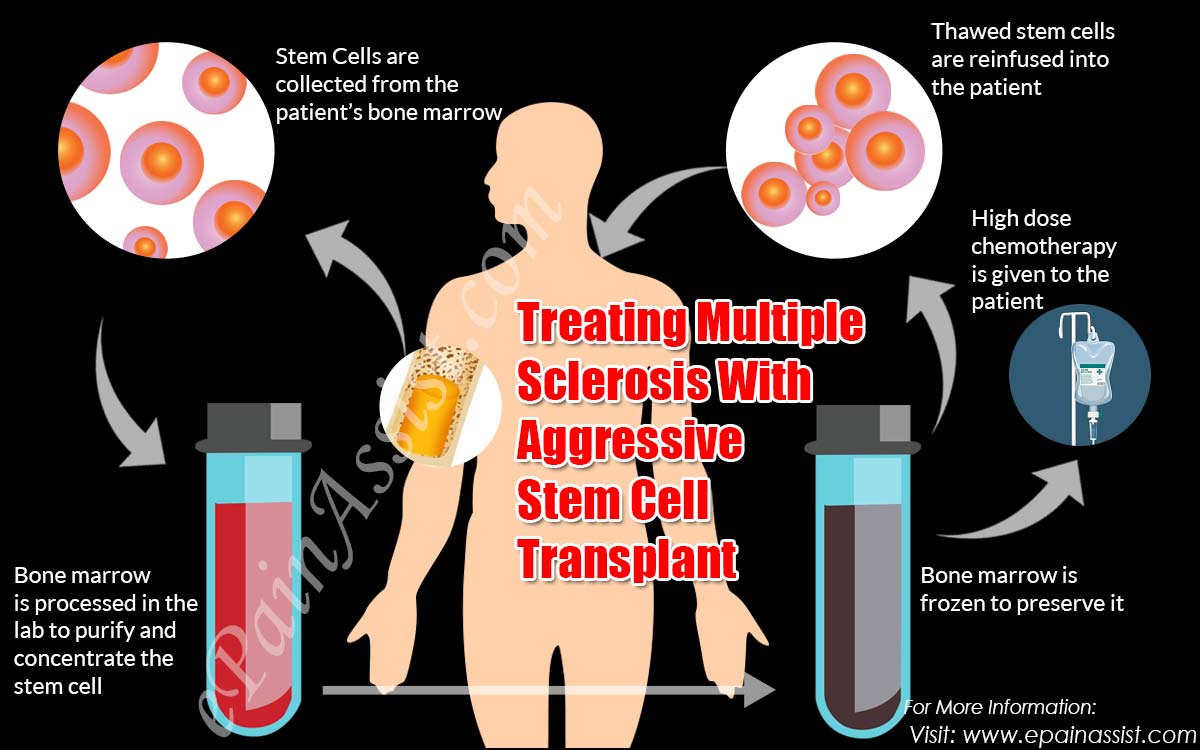About Multiple Sclerosis & Its Treatment with Aggressive Stem Cell Transplant
Multiple sclerosis is a disabling condition of the central nervous system (CNS) that disturbs the flow of information within the brain, and also from between the brain and rest of the body. In spite of years of research being done on the subject, the cause of multiple sclerosis remains unknown. It is considered to be an autoimmune disease, where the body’s immune system starts attacking its own healthy tissues. In people suffering from multiple sclerosis, the malfunction of the immune system leads to the destruction of myelin, a substance that covers and protects the nerve fibers inside the spinal cord and the brain. Commonly referred to just as MS, multiple sclerosis symptoms vary from person to person and usually start showing up between the ages of 20 to 40. Recent research has shown that stem cell therapy might be the key to treating multiple sclerosis, or at least in repairing the damage caused to the nervous system. In fact, one mode of treatment has suggested treating MS with aggressive chemotherapy followed by stem cell transplant to completely halt the progression of multiple sclerosis. Following the suppression of the immune system with chemotherapy, the stem cells are introduced into the bloodstream. This procedure is now known as autologous hematopoietic stem cell transplant (HSCT). Researchers, in fact, rebuild the immune system from stem cells that are harvested with the patient’s own blood. The survivors of this clinical study showed no relapses and no new MS activity either. Hailing the success of this trial, many researchers are now working on such types of novel methods with stem cells to try and find a cure for Multiple Sclerosis.

Role of Autologous Hematopoietic Stem Cell Transplantation in Treating Multiple Sclerosis (MS)
Autologous hematopoietic stem cell transplantation (aHSCT) is a process that has shown some success in halting the autoimmune functions that take place in Multiple Sclerosis. Though the treatment of Multiple Sclerosis with Autologous hematopoietic stem cell transplantation (aHSCT) has not shown to be effective in every patient, it is still the closest cure that scientists have been able to develop that has shown some success in multiple sclerosis. This technique has rendered patients free from needing Multiple Sclerosis treatment and also from having any further relapses for a prolonged period of time. However, like with all procedures under trial, the risks involved with this procedure are quite high.
This stem cell transplantation procedure is done by collecting stem cells from the patient’s own bone marrow itself. The patient is then exposed to aggressive chemotherapy to suppress the immune system. This is done so that once the stem cells are introduced back into the patient, the immune system is reset to no longer attacking the body. The first clinical trials conducted by Dr. Harold L. Atkins and Dr. Mark S. Freedman discovered that the immune system had to be completely wiped out in order to be reset. Suppressing the system was simply not enough to reset it. Therefore, wiping out the entire system improved the chances of success with injecting the stem cells back. The study successfully showed that nearly 70% of the patients survived for over three years with no signs of a relapse of the disease, no new brain lesions, and no progression of multiple sclerosis as well. In patients who already had brain lesions, the transplantation of stem cells showed a significant decline and the brain deterioration activity was also successfully witnessed to be slowing down. With time and some improvement in the safety levels of the treatment, then aHSCT treatment for Multiple Sclerosis (MS) might very well become the standard approach for treating multiple sclerosis.
Treatment for Multiple Sclerosis
As of today, there is no cure for Multiple Sclerosis (MS). However, a number of treatments are being used to manage the symptoms and improve the quality of life of the sufferers. Doctors prescribe drugs to slow down the progression of the disease, and also to prevent or treat any attacks. These drugs also ease your symptoms and help you cope up with the stress that is common in any autoimmune disease.
Some of the drugs that are used to slow down the progression of MS or help with the nerve damage include:
- Dimethyl fumarate, such as Tecfidera.
- Teriflunomide, such as Aubagio.
- Beta interferons, such as Betaseron, Avonex and Rebif.
- Natalizumab, such as Tysabri.
- Copolymer-1, such as Copaxone.
- Daclizumab, such as Zinbryta.
- Dalfampridine, such as Ampyra.
- Ocrelizumab, such as Ocrevus.
- Mitoxantrone, such as Novantrone.
Doctors can also prescribe some steroids for reducing the period of Multiple Sclerosis (MS) attacks or for bringing down the severity of the attacks. Some drugs like tranquilizers, muscle relaxants or Botox also can help ease the muscle spasms that occur during multiple sclerosis. They can also help treat some of the other symptoms of multiple sclerosis.
A visit to a physical therapist can also help as you can learn some exercises to increase your overall body’s strength and balance. Regular exercise and a healthy diet are some other things you can do to ease your Multiple Sclerosis (MS) symptoms. Disease modifying drugs have not proven to be effective in treating progressive Multiple Sclerosis (MS).
Also Read:
- Massage Therapy for Multiple Sclerosis (MS): Benefits- Pain, Stress Reduction
- Multiple Sclerosis (MS) or Disseminated Sclerosis: Types, Risk Factors, Symptoms, Treatment
- Special Diets For Multiple Sclerosis (MS)
- Treatments for Multiple Sclerosis & List of Medications to Treat MS
- Alcohol and Risk of Multiple Sclerosis: Is there a Link?
